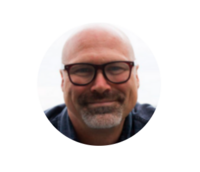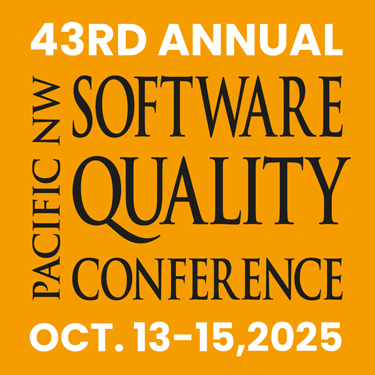Rachael Lovallo

Interviewer: How do Accessibility and Inclusive Design relate to Quality?
Michael Larsen: If a product is difficult or impossible to use, we can't rightly call it a quality product. When we ignore users with disabilities or put them on the back burner, so to speak, we are telling a population of users that they will be receiving a sub-par service or product, one in which they will not be able to use effectively. To me, that goes against Quality in any meaningful sense that I am aware of.
Interviewer: What are a couple of tangible ways members of the PNSQC community can start advocating for Accessibility and Inclusive Design within their organizations?
ML: First and foremost, it helps to think that everyone, no matter who they are, will face a time where they will deal with a primary disability of some kind. For most it will be related to clear vision, as the most common disability is declining vision as we age. Still there are plenty of other issues and challenges we can face, and they do not even have to be chronic conditions. Many "disabilities" are situational and yes, perfectly healthy, normative users can find themselves in situations where they are situationally disabled. With that in mind, doesn't it make sense to do what we can to make our products effective for as many people as possible?
Interviewer: Do you recommend any tools or approaches for successful Accessibility and Inclusive Design development and testing?
ML: There are numerous tools out there that can help people understand Accessibility. There are a variety of tools that can be helpful but if you want an immediate comparison and understanding, I'd suggest becoming familiar with the "W3C's Before and After Page." This will show the user the difference between a site that is well formed and accessible versus one that is not.
Interviewer: You’ve worked in Quality for three decades now! How do you stay engaged and fulfilled in the field?
ML: Part of that is helped by the podcast I produce, which is "The Testing Show" (available on Apple Music, Google Music, and Spotify... shameless plug!) as well as participating in conferences such as PNSQC that let me get out and speak on topics I care about. Outside of that, I have always enjoyed and found interest in making software that is effective for as many people as possible, including the last decade with a focus on Accessibility Advocacy.
Interviewer: You’ve been involved with PNSQC as both a speaker and volunteer for several years. Do you have a favorite memory of a past PNSQC conference to share?
ML: Being selected twice as a top speaker (I've placed both 2nd and 3rd) has definitely been a high point. I enjoy speaking at PNSQC and to have been considered a top speaker by the attendees has been both gratifying and humbling.
Interviewer: What tools do you use to focus when you have in-depth tasks to accomplish?
ML: I confess I am terrible at this much of the time but one of the best tools I've ever used is referred to as "The Procrastination Dash." It's a form of Pomodoro time management but where Pomodoro has a user focus on four 25 minute periods of focus, with four five minute break periods in two hours, the Procrastination Dash is six eight-minute periods of focus, each followed by a two-minute break, each hour one wishes to apply it. I will argue that, even though the Procrastination Dash gives two extra minutes of break time, I accomplish more in the procrastination dash than I do in the regular Pomodoro approach, because I will struggle to stay focused for twenty five minutes much of the time, but I can absolutely stay on task with virtually anything for eight minutes. The Procrastination Dash is something I learned from Merlin Mann about 15 years ago, so proper credit where it is due.
Interviewer: What is the number one piece of advice you’d give your younger self professionally, or anyone just starting their career in Quality?
ML: Have a high tolerance for ambiguity, and realize that you are entering a field that often requires you to be critical of others work and efforts. This is by design and it is meant to help us validate and qualify the work that has been done. If that aspect bothers you, testing may not be a good long term fit. However, if you like to see science in action every day, software testing and Quality Assurance by design lets you be a scientist and experiment every single day. If that excites you, Quality is a great field to be in.
Thank you for sharing your knowledge, Michael! You can follow him on LinkedIn, and on Twitter, and can learn more about his work and upcoming PNSQC 2022 talk here.
